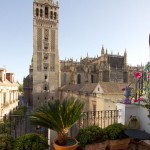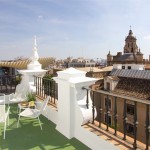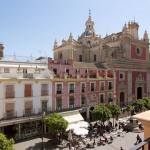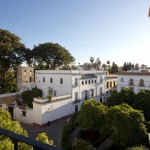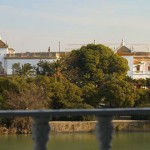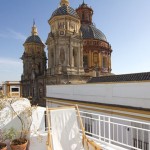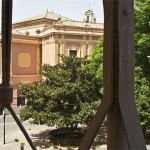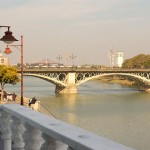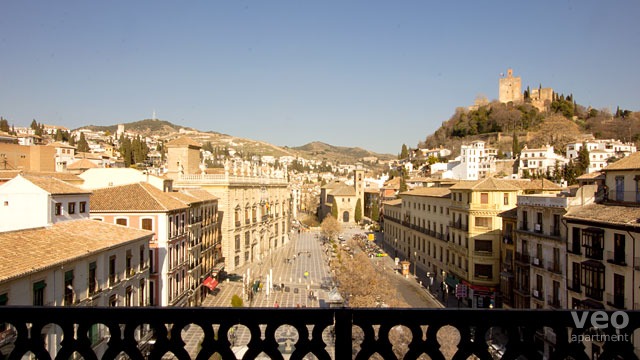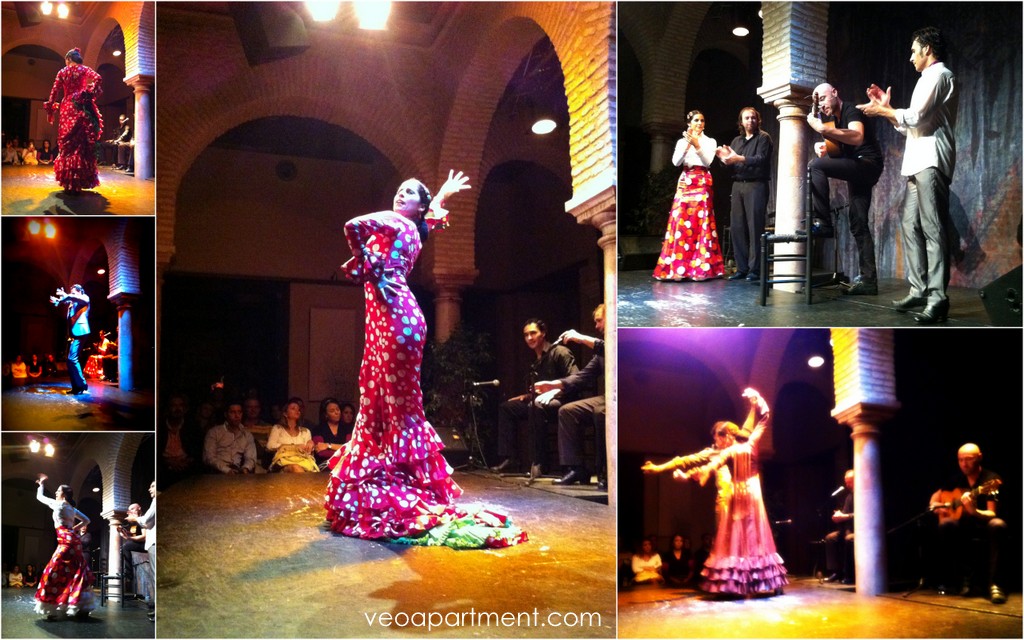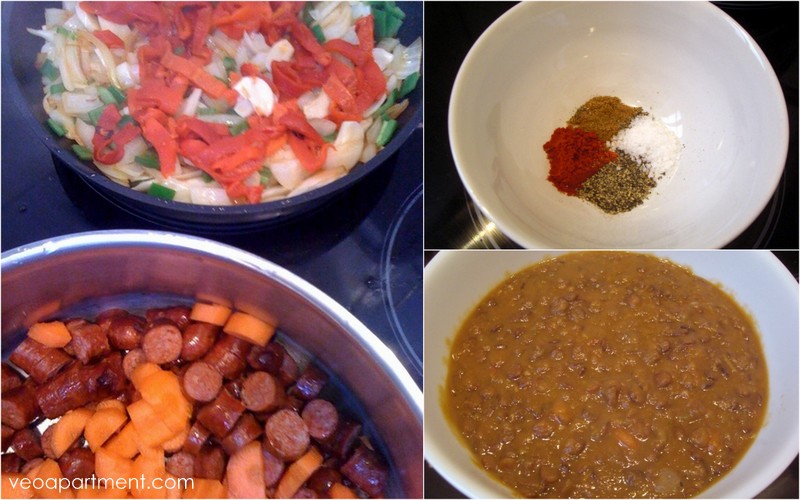The ancient city of Granada in the South of Spain lies at the foot of the Sierra Nevada mountains to its east, and overlooking the fertile plain to its west, to which it owed its early prosperity. Between the eleventh century and its final conquest by the Christians in 1492 it was the most important Muslim city in Spain, and the layout of the central part of modern Granada, and the unique character of its principal neighbourhoods, still owes a lot to this period of its history.
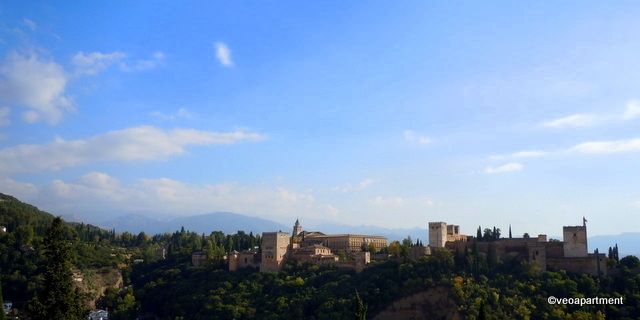
View of the Alhambra from the San Nicolas Lookout
Granada’s most famous landmark, the Alhambra, dominates the city centre from its perch on a rocky outcrop above the deep, narrow valley of the River Darro. On the other side of the valley, on hills only a little less lofty than the Alhambra, are the neighbourhoods of the Albaicín and Sacramonte.
Where the river emerges from between the hills you can find the city’s central square, the Plaza Nueva, or New Square, so named because it was the first to be built by the Christians after the reconquest. Built over the River Darro, which runs in a culvert underneath, it’s a wide, pleasant square lined with shops and cafes, as well as the historic court house. To the south and east is the neighbourhood of Realejo-San Matias, and to the south and west that of el Centro.
Albaicín
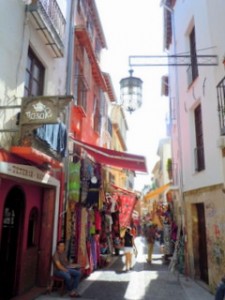
Moroccan Market in the Albaicín
The Albaicín neighbourhood is one of the oldest parts of the city, and is made up of a network of steep, winding streets and small squares, many with wonderful views of the famous palace fortress, with the Sierra Nevada in the background beyond. Best known of the miradores, or lookouts, is San Nicolas, and it’s a great place to come in the evening for a drink, look across to the Alhambra, and if you’re lucky, to hear some Flamenco or Spanish guitar.
After the reconquest it became the Muslim quarter of the city, but with the expulsion or conversion of Muslims by the Catholic Kings it gradually became depopulated, and before long moneyed Christians began to move in, demolishing the small houses and building what became known as Carmenes or grand houses with gardens or orchards. The mosques were demolished and replaced with churches, although remnants of the original buildings can still be glimpsed, as in the Church of San Salvador. Another feature of muslim architecture that can still be found dotted around the area is the aljibes, underground cisterns built for the storage of water.
Today, there is a distinctly North African feel to the lower Albaicín with tearooms and small shops selling Moroccan goods. In 2003 the upper Albaicín became home to the Main Mosque of Granada, the first in the city since 1492.
The Albaicín is, above all, a neighbourhood for wandering slowly through narrow streets, taking pleasure in hidden corners and the scents from the many gardens; peeping into Carmenes; and enjoying the spectacular views from its terraces and miradores.
Sacramonte
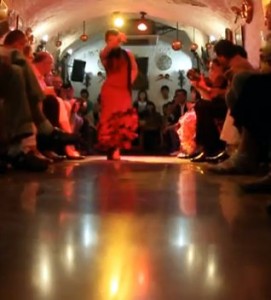
Flamenco Caves in Sacromonte
Beyond the Albaicín is what is surely Granada’s most picturesque neighbourhood, the Sacramonte, named for the 17th century abbey at the top of the Valparaíso hill, which is well worth the trouble of a visit. It’s known as the gypsy neighbourhood, and is notable for the whitewashed cave houses built into the hill, and for being the best place in the city for Flamenco.
Realejo-San Matias
The Realejo is the old Jewish quarter of the city, and like the Albaicín on the other side of the Alhambra, has many steep, labyrinthine streets, with whitewashed houses and Carmenes. The most famous of these, the Carmen de los Martires, is open to the public and enjoys lovely views over the plains, the city and Sierra Nevada. Go up to the Campo del Principe for the bars and restaurants, and walk back down past the Casa de los Tiros, the Antigua Capitania and the Convent of the Mercadarias to San Matias street, another place with lots of places to eat and drink.
El Centro
To the southwest of Plaza Nueva is El Centro, the main commercial centre. Just off the Gran Via you can find the Cathedral and the Royal Chapel, both built in the 16th century as part of the process of Christianization of the city. Nearby is San Agustin, the main food market, and the Alcaicería, once the Arab silk market, but now mainly lined with souvenir shops. Behind these is the Plaza Bib-Rambla, a grand open square with a central fountain called the Gigantes, colonnades, bars and restaurants. Although it has undergone many changes, there has been a public space here since early Nasrid times, which has been used for markets, bullfights, fairs and autos-da-fé.
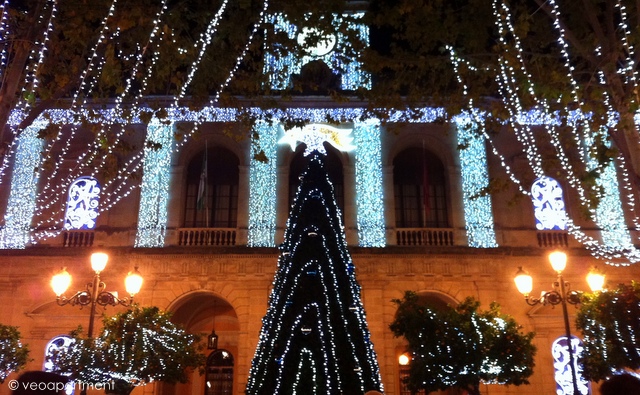
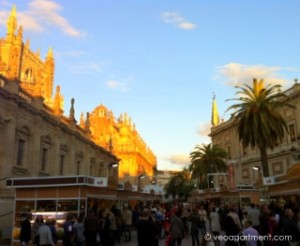 The Fería de Belen (nativity), where you can go to buy everything you need for your nativity scene, is in Calle Fray Ceferino González, between the cathedral and the Archivos de India. Stables, mangers, sheep, wise men, Roman centurions – you name it, they’ll have it. Browsing or buying, if you’re into either christmas or models spend a while wandering around here.
The Fería de Belen (nativity), where you can go to buy everything you need for your nativity scene, is in Calle Fray Ceferino González, between the cathedral and the Archivos de India. Stables, mangers, sheep, wise men, Roman centurions – you name it, they’ll have it. Browsing or buying, if you’re into either christmas or models spend a while wandering around here.